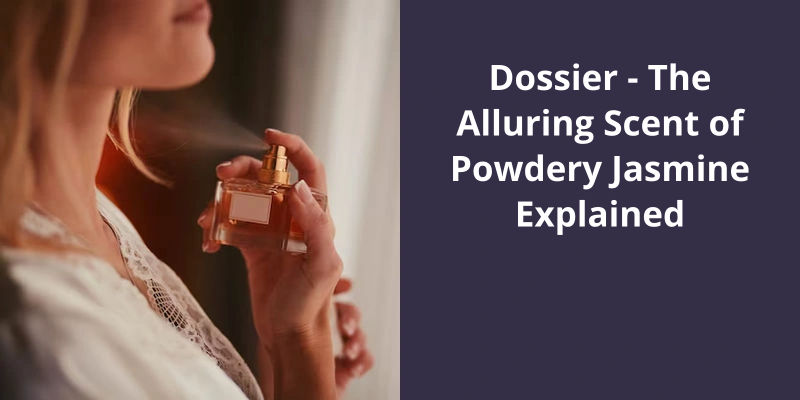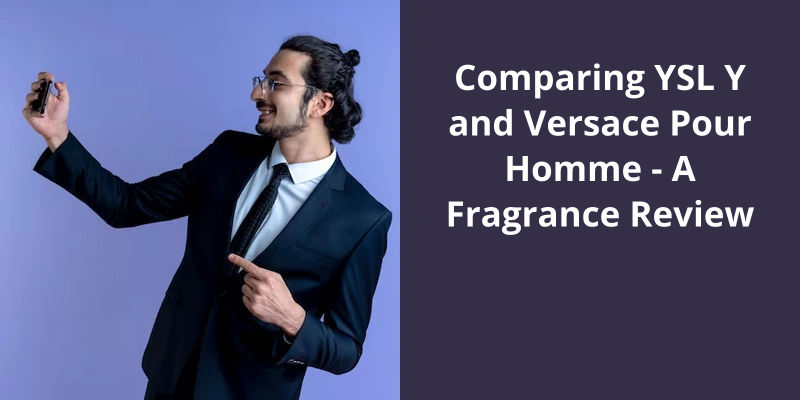DEP and DPG are both cosmetic solvents that are commonly used in perfumes and cosmetics. DEP, which stands for Diethyl Phthalate, is a colorless liquid that is often used as a fixative in fragrances to extend their duration on the skin. It is also used to enhance the film-forming capacity of products, making them adhere better to the skin. On the other hand, DPG or Dipropylene Glycol is used in fragrances and cosmetics as a solvent and carrier, due to its low toxicity and hypoallergenic properties. In perfumery, it is preferred in reed diffusers and room sprays, because of its slower evaporation rate compared to alcohol. So, in a nutshell, the main difference between DEP and DPG is in their uses and properties: DEP is used mainly as a fixative to prolong the perfume scent, while DPG is mainly used as a safe solvent and carrier in fragrances and other beauty products.

Is DPG Good for Perfume?
Dipropylene glycol, or DPG, is widely used in the fragrance industry as a solvent for fragrances. As a chemical compound, DPG has many properties that make it an ideal ingredient for perfumes. One of the major benefits of using DPG in fragrance oils is that it helps dilute the concentrated fragrances to produce a pleasant and subtle aroma.
It isn’t affected by light, heat or humidity levels, making it an ideal solvent for use in perfume manufacturing.
This means that the scent of the perfume is released slowly over time, ensuring that the wearer enjoys a long lasting fragrance that isn’t overpowering.
It’s used to blend the different fragrance oils and carrier oils to produce a smooth and consistent blend. This produces an aromatic oil that’s easy to apply and absorbs quickly into the skin, leaving it feeling soft and smooth.
It’s ability to dilute concentrated fragrances, slow release fragrance over time, and remain stable under various conditions makes it an ideal ingredient in perfume manufacturing. Additionally, it’s low toxicity level and environment-friendly nature endear it to perfumers looking for safe and sustainable solutions.
What Is DEP Made Of?
DEP, or diethyl phthalate, is a chemical compound that belongs to a group of chemicals called phthalates. Phthalates are mainly used in the production of plastics to make them more flexible and resilient. DEP is a colorless and odorless liquid that’s miscible in water, alcohol and ether. It’s classified as a solvent, meaning it’s the ability to dissolve other substances.
DEP is made from the reaction of phthalic anhydride with ethanol. Phthalic anhydride is a white crystalline compound that’s formed from the oxidation of naphthalene or o-xylene. Ethanol is a clear, colorless and flammable liquid that’s used as a solvent and in the production of alcoholic drinks. The reaction is catalyzed by concentrated sulfuric acid, which acts as a dehydrating agent.
DEP is widely used as a plasticizer in the production of polyvinyl chloride (PVC) plastics. Plasticizers are added to plastics to make them softer and more flexible. DEP is also used as a solvent in the production of perfumes, colognes, soaps, detergents, and personal care products. In these applications, it helps to dissolve and blend the different fragrance and cosmetic ingredients.
DEP is considered to be relatively safe for use in consumer products. It’s low acute toxicity and isn’t a skin irritant or sensitizer. However, there have been concerns about the potential health effects of phthalates, including DEP, in some studies. Some studies suggest that exposure to phthalates may be associated with adverse effects on reproductive and developmental health.
How Do Regulatory Agencies Monitor and Regulate the Use of DEP and Other Phthalates in Consumer Products?
- Conducting routine inspections of manufacturing facilities
- Reviewing safety data and toxicity studies
- Setting safe exposure levels for DEP and other phthalates
- Requiring labelling of products containing DEP or other phthalates
- Investigating consumer complaints and reports of adverse health effects
- Collaborating with other regulatory agencies to share information and resources
Source: Toxicity review of diethyl phthalate (DEP)
Understanding the Diastolic Pulmonary Gradient (DPG), Transpulmonary Gradient (TPG), and Pulmonary Vascular Resistance (PVR) are crucial in the diagnosis and management of various cardiovascular and pulmonary diseases. These parameters provide valuable insight into the functioning of the heart and lungs and aid in determining the best course of treatment for patients. In this article, we will delve into each of these concepts, discussing their relevance to medical practice and how healthcare professionals use them to improve patient outcomes.
What Is DPG in Medicine?
Diastolic Pulmonary Gradient (DPG) is a crucial parameter in the field of pulmonary medicine. In medical terminology, DPG is defined as the difference between the pulmonary artery diastolic pressure (PADP) and the pulmonary capillary wedge pressure (PCWP) in the heart. The measurement of DPG is used to evaluate the severity of various pulmonary diseases such as idiopathic pulmonary arterial hypertension (IPAH), pulmonary embolism, and left heart disease.
DPG is often used in conjunction with other parameters such as Transpulmonary Gradient (TPG) and Pulmonary Vascular Resistance (PVR) to provide a comprehensive evaluation of the cardiovascular function. TPG is a measure of the pressure gradient across the entire pulmonary vasculature, including the pulmonary artery, the pulmonary capillaries, and the pulmonary veins. PVR, on the other hand, assesses the resistance to blood flow in the pulmonary arteries, which is indicative of the degree of constriction or narrowing of the blood vessels.
DPG, TPG, and PVR are crucial determinants in clinical decision-making for managing patients with pulmonary hypertension. Treatment options include blood thinners, vasodilators, oxygen therapy, and in severe cases, lung transplantation. Regular monitoring of these parameters helps determine the effectiveness of treatment and adjust the dosage of medication.
Now that we know what DPG cutting oil is and it’s purpose, let’s delve deeper into it’s benefits for fragrance makers and how it can enhance the overall scent profile of their products.
What Is DPG Cutting Oil Used For?
DPG cutting oil plays an essential role in the manufacturing of fragrances and cosmetics. It’s a high-purity product specially designed for odor-sensitive applications. It enhances the stability and longevity of these fragrance oils in the final product, such as perfumes, lotions, and soaps.
It’s a premium carrier oil that’s crafted and made in the USA. The product is manufactured under strict quality control standards to ensure consistency in every bottle. The unique properties of DPG make it an ideal ingredient in various industries.
It’s added to the final product to increase the volume and reduce the potency of the essential oil. This makes the final product more affordable for consumers without compromising on quality. DPG is also an excellent solvent for many types of fragrance and essential oils.
It’s essential in these industries because of it’s ability to dilute and reduce the viscosity of fragrance oils without interfering with the scent or properties of the final product. With it’s low odor profile, high-quality standards, and availability in the USA, it’s a preferred choice for many consumers and manufacturers alike.
Conclusion
In conclusion, the dep vs dpg debate has been a contentious issue for many years, with both sides presenting strong arguments advocating for their preferred option. While some experts argue that dep is more effective due to it’s ability to detect errors in more complex sentence structures, others believe that dpg is more efficient as it’s able to process data more quickly. As the field of natural language processing continues to evolve, it’s likely that new techniques and approaches will emerge that will further complicate the dep vs dpg debate. Nevertheless, it’s important for researchers and practitioners to remain open-minded and adaptable, as ultimately the ultimate goal is to develop techniques that are capable of producing accurate and meaningful results in a wide range of contexts.





